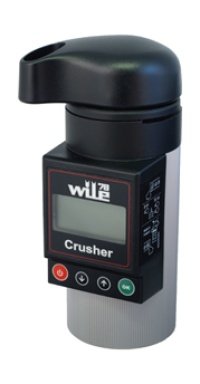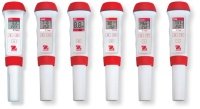How To Measure Loss Of Mass in a Chemical Reaction

The Science Behind the Experiment
Although mass can be rearranged or change in form, it cannot be created or destroyed during a chemical reaction. In short, the total mass of the starting materials (reactants) will equal the mass of the product. This statement summarises the Law of Conservation of Mass.
When, during an experiment, you find there is less mass in your test beaker, the nuance to understand is that not all formed products stay in the test measurement vessel. Often during a reaction, we will see losses in mass in the form of gaseous elements. Unless you cap your test vessel tightly, a change in mass may occur.
This experiment is an easy way to test the mass conservation principle's efficacy using an effervescent tablet. An effervescent tablet comprises granulated ingredients packed into a dense form, designed to dissolve in contact with water. Effervescence is the escape of gas from an aqueous solution resulting in fizzing or foaming. The tablet will breakdown in water; for many types of effervescent tablets, the element most often released is carbon dioxide.
The Design of the Experiment
At the beginning of the experiment, we will weigh the water and effervescent tablet. Then every 30 seconds as the tablet dissolves, we will take additional measurements until the tablet completely dissolves and determine any mass loss. We will then repeat the same procedure, but this time with an identical tablet and capped bottle.
Materials Used
- Room temperature water
- Glass Beaker
- A glass beaker with a bung (or a container tightly capped to create a closed system)
- Navigator Multi-purpose Balance
- Effervescent tablet; and
- Stopwatch.
Method
- On the Navigator Multi-purpose Balance, place the empty beaker and tare it.
- Pour 200mL of water into the beaker.
- Place the effervescent tablet onto the scale next to the beaker and record the total weight.
- Add the effervescent tablet to the beaker and start the stopwatch. Record the mass every 30-seconds until seven minutes have elapsed.
- Remove the beaker from the scale.
- Pour 200mL of water into the second beaker.
- Place the effervescent tablet onto the scale next to the beaker and record the total weight.
- Add the effervescent tablet to the beaker, cap the top of the container, and start the stopwatch. Record the mass every 30-seconds until five minutes have elapsed.
- After five minutes have elapsed, open the container, record the weight for a further two minutes.
Results
| Time | Open Beaker |
Capped Container (Closed System) |
| 0:00 | 1 | 2 |
| 0:30 | 1 | 2 |
| 1:00 | 1 | 2 |
| 1:30 | 1 | 2 |
| 2:00 | 1 | 2 |
| 2:30 | 1 | 2 |
| 3:00 | 1 | 2 |
| 3:30 | 1 | 2 |
| 4:00 | 1 | 2 |
| 4:30 | 1 | 2 |
| 5:00 | 1 | 2 |
| 5:30 | 1 | 2 |
| 6:00 | 1 | 2 |
| 6:30 | 1 | 2 |
| 7:00 | 1 | 2 |
For the open beaker, the combined mass of water and effervescent tablet started as XX. When wholly dissolved, the final mass of the remaining product was XX – i.e., a reduction of XX.
The capped beaker held a steady mass for the first five minutes of the experiment. With the release of formed gases, we observed a total mass reduction of XX.
Conclusion
After the final step of our experiment, we observed that the mass of both the open beaker and the closed container had reduced. With our open sample, we recorded a steady reduction in weight as time elapsed. In the 'closed system,' i.e., our capped sample, the trapped gas and liquid's combined mass remained unchanged, but the mass suddenly decreased when gas was allowed to escape.
Don't fret - No mass was harmed (or created) in the making of this experiment. We concluded that; the Conservation of Mass principle holds and that the effervescent reaction merely resulted in a release of gas into the surrounding air.
Should you have any experiments you would like our team of scientists to undertake and share with Instrument Choice customers, feel free to contact us! Call 1300 737 871 or email [email protected].
Also interesting
A grain moisture meter is an indispensable tool for selecting the ideal time to harvest, determining product quality, and reducing the risk of knock-on effects when storing out-of-specification high moisture wheat.
Instrument Choice Scientists wanted to find the best portable and benchtop wheat moisture meters available today.

OHaus StarterPens series is an affordable line of handheld and portable meters. There are instruments to accurately measure pH, conductivity, salinity, oxidation-reduction potential (ORP), dissolved oxygen(DO), and total dissolved solids (TDS).
To help you find the best OHaus StaterPen for your needs, Instrument Choice Scientists examined the differences they found with each meter. We then set out results in easy-to-read tables.

